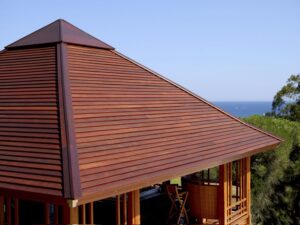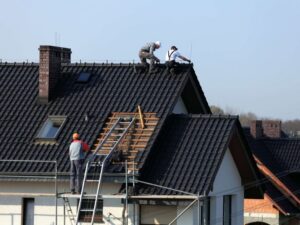When it comes to energy-efficient remodeling, one of the most crucial aspects to consider is home insulation. Insulation plays a significant role in maintaining a comfortable indoor environment while minimizing energy consumption. By reducing heat transfer and air leakage, insulation helps to create a more sustainable and energy-efficient home.
Improving your home’s energy efficiency through proper insulation can significantly impact your overall sustainability goals. When considering a remodel, it’s crucial to partner with experts who understand the intricate balance between aesthetics and functionality. Adar Builders offers expert remodeling services in Los Angeles, CA, ensuring your project integrates the latest energy-efficient solutions seamlessly.
For residents seeking trusted remodeling services in Long Beach, CA, rely on Adar Builders for their expertise in creating sustainable living spaces. Meanwhile, homeowners aiming for premier remodeling services in Santa Clarita, CA, can benefit from Adar Builders’ commitment to quality and energy-conscious designs. Lastly, they stand as the go-to remodeling contractor in Glendale, CA, prioritizing energy-efficient solutions in every renovation endeavor.
So, in this blog post, we will explore the importance of home insulation in energy-efficient remodeling, the benefits it offers, different insulation types, factors to consider when choosing insulation, proper installation techniques, common problems, and ways to improve home insulation.
Understanding Energy Efficiency
Before delving into the importance of home insulation, it’s essential to have a clear understanding of energy efficiency. Simply put, energy efficiency refers to the utilization of less energy to perform the same tasks, resulting in reduced energy waste. Energy-efficient remodeling focuses on optimizing a home’s energy performance by addressing various aspects, such as insulation, heating and cooling systems, lighting, appliances, and renewable energy sources.
Why Home Insulation Matters
Home insulation is a critical component of energy-efficient remodeling due to its impact on energy consumption and thermal comfort. It acts as a barrier against outside temperatures, preventing heat transfer in the summer and retaining warmth during the winter. Without proper insulation, your home becomes susceptible to heat loss or gain, requiring more energy to maintain a comfortable indoor temperature. Additionally, inadequate insulation can result in air leaks, moisture problems, and increased noise infiltration.
The Benefits of Proper Insulation
Energy Savings
One of the primary benefits of proper home insulation is energy savings. By minimizing heat transfer and air leakage, insulation reduces the amount of energy required to heat or cool your home. This, in turn, leads to lower energy bills and a reduced carbon footprint. According to the U.S. Department of Energy, a well-insulated home can save homeowners up to 20% on heating and cooling costs.
Improved Comfort
In addition to energy savings, proper insulation improves comfort levels within your home. Insulation helps maintain a consistent indoor temperature, eliminating drafts and hot or cold spots. By eliminating temperature variations, insulation creates a more comfortable living environment for you and your family.
Sound Insulation
Insulation not only helps with thermal comfort but also contributes to sound insulation. It acts as a barrier that can reduce noise transmission from outside sources, such as traffic or neighbors. Properly insulated homes provide a quieter and more peaceful living space, allowing you to enjoy a higher level of privacy and comfort.
Prevention of Moisture and Mold Problems
Another benefit of home insulation is the prevention of moisture and mold problems. Insulation helps create a barrier against moisture, reducing the risk of condensation and mold growth. By controlling moisture levels, insulation helps maintain a healthy indoor environment and protects the structural integrity of your home.
Types of Home Insulation
When it comes to home insulation, there are various types available, each with its own unique characteristics and installation requirements. The most common types of home insulation include:
- Fiberglass Insulation
- Cellulose Insulation
- Spray Foam Insulation
- Rigid Foam Insulation
- Reflective Insulation
Factors to Consider when Choosing Insulation
R-Value: Understanding Thermal Resistance
When choosing insulation, it’s crucial to consider its R-value, which measures thermal resistance. The higher the R-value, the greater the insulating effectiveness. The recommended R-value varies based on factors such as climate, building design, and heating/cooling system efficiency. Consulting an insulation professional can help determine the appropriate R-value for your home.
Moisture Resistance: Protecting Against Water Damage
In areas prone to moisture, it’s essential to choose insulation materials with moisture resistance properties. Insulation that can withstand moisture helps prevent water damage, mold growth, and reduces the risk of structural problems in the long run.
Eco-Friendly Options: Prioritizing Sustainability
For individuals concerned about the environmental impact, it is important to explore eco-friendly insulation options. These options could include materials made from recycled content or natural fibers. Choosing sustainable insulation materials contributes to a greener and more sustainable home.
Installation: DIY or Professional?
Consider the complexity of the insulation installation process when choosing the type of insulation. Some insulation materials require professional installation, while others are suitable for do-it-yourself (DIY) projects. Keep in mind that improper installation can compromise insulation effectiveness and impact energy efficiency.
Cost Effectiveness: Balancing Initial Investment and Long-Term Savings
The cost of insulation materials and installation can vary. When choosing insulation, it’s important to strike a balance between the initial investment and long-term savings. Consider the potential energy savings over time in relation to the upfront cost to ensure the chosen insulation is cost-effective.
Proper Installation Techniques
Proper installation is crucial to ensure the effectiveness of home insulation. Each insulation type may require different installation techniques. It’s important to follow manufacturer guidelines and consult professionals when necessary. Some key installation techniques to consider include:
- Sealing air leaks before installing insulation
- Ensuring proper coverage and thickness of insulation
- Using appropriate vapor barriers in moisture-prone areas
- Installing insulation according to recommended methods
- Ensuring proper ventilation to prevent moisture buildup
Common Problems with Home Insulation
Inadequate Insulation Thickness
Inadequate insulation thickness can compromise its effectiveness. Insufficient insulation may result in increased energy consumption, lower comfort levels, and potential moisture or mold issues. Consulting professionals can help determine the appropriate insulation thickness for your home.
Air Leaks and Drafts
Air leaks and drafts can significantly reduce the effectiveness of insulation. Common areas for air leakage include windows, doors, electrical outlets, and gaps around pipes. Sealing these air leaks helps maximize the efficiency of insulation and improves energy efficiency.
Moisture and Mold Issues
Moisture infiltration can lead to mold growth and damage to insulation materials. Addressing moisture issues and ensuring proper ventilation helps prevent mold problems and prolongs the lifespan of insulation.
Improper Installation Techniques
Improper installation techniques can compromise insulation effectiveness. It’s important to follow manufacturer’s instructions and guidelines or consult professionals to ensure insulation is installed correctly, maintaining its integrity and effectiveness.
Insulation Damage or Deterioration
Over time, insulation materials may experience damage or deterioration. This could be due to moisture problems, pests, or physical damage. Regular inspections and maintenance help detect and address any insulation issues promptly.
How to Improve Home Insulation
If you have identified issues with your home insulation or want to enhance its effectiveness, there are several ways to improve home insulation:
- Add insulation to under-insulated areas
- Seal air leaks with weatherstripping or caulk
- Upgrade windows and doors with energy-efficient options
- Insulate ducts to prevent energy loss in HVAC systems
- Consider professional energy audits to identify areas of improvement
Financial Incentives for Insulating Your Home
Many government programs and utilities offer financial incentives for homeowners who choose to insulate their homes. These incentives can include tax credits, rebates, or grants to offset the cost of insulation installation. Researching available incentives in your area can help make energy-efficient remodeling more affordable.




